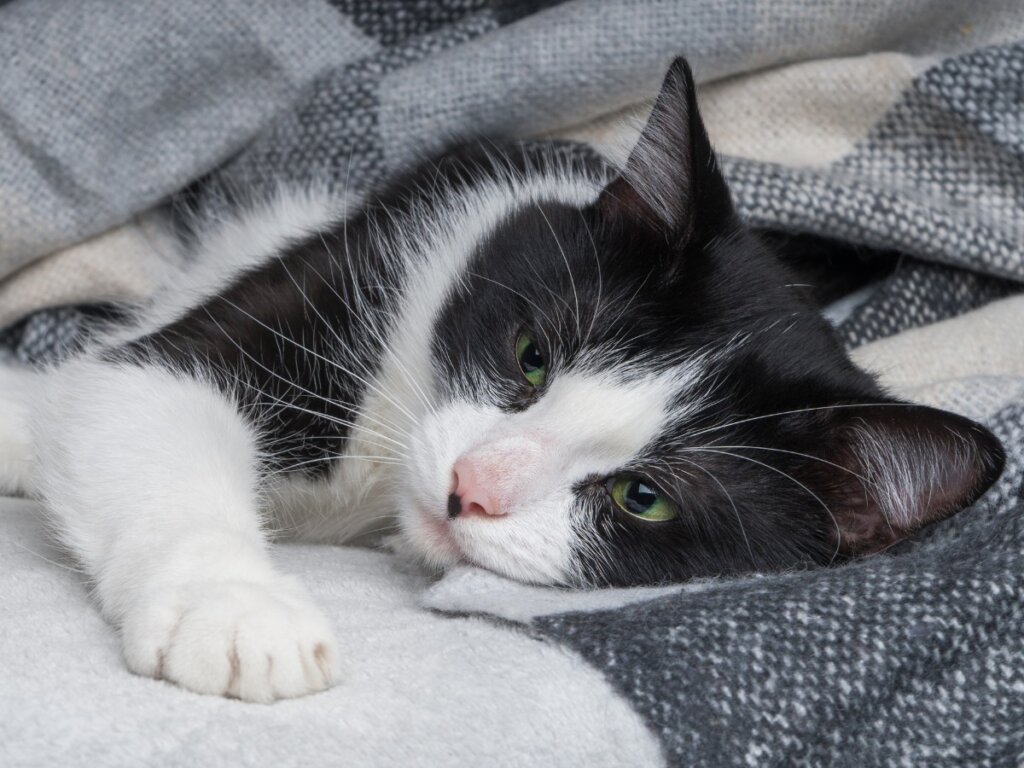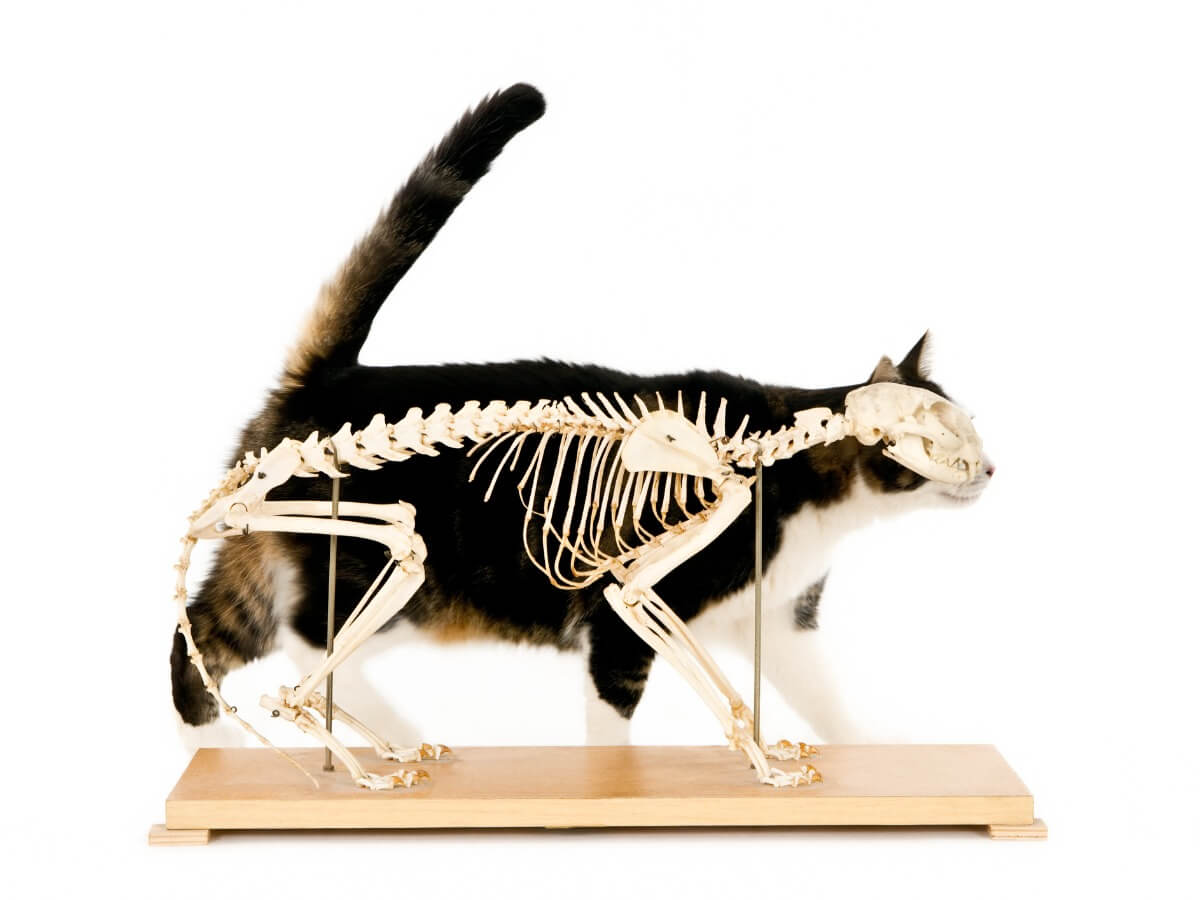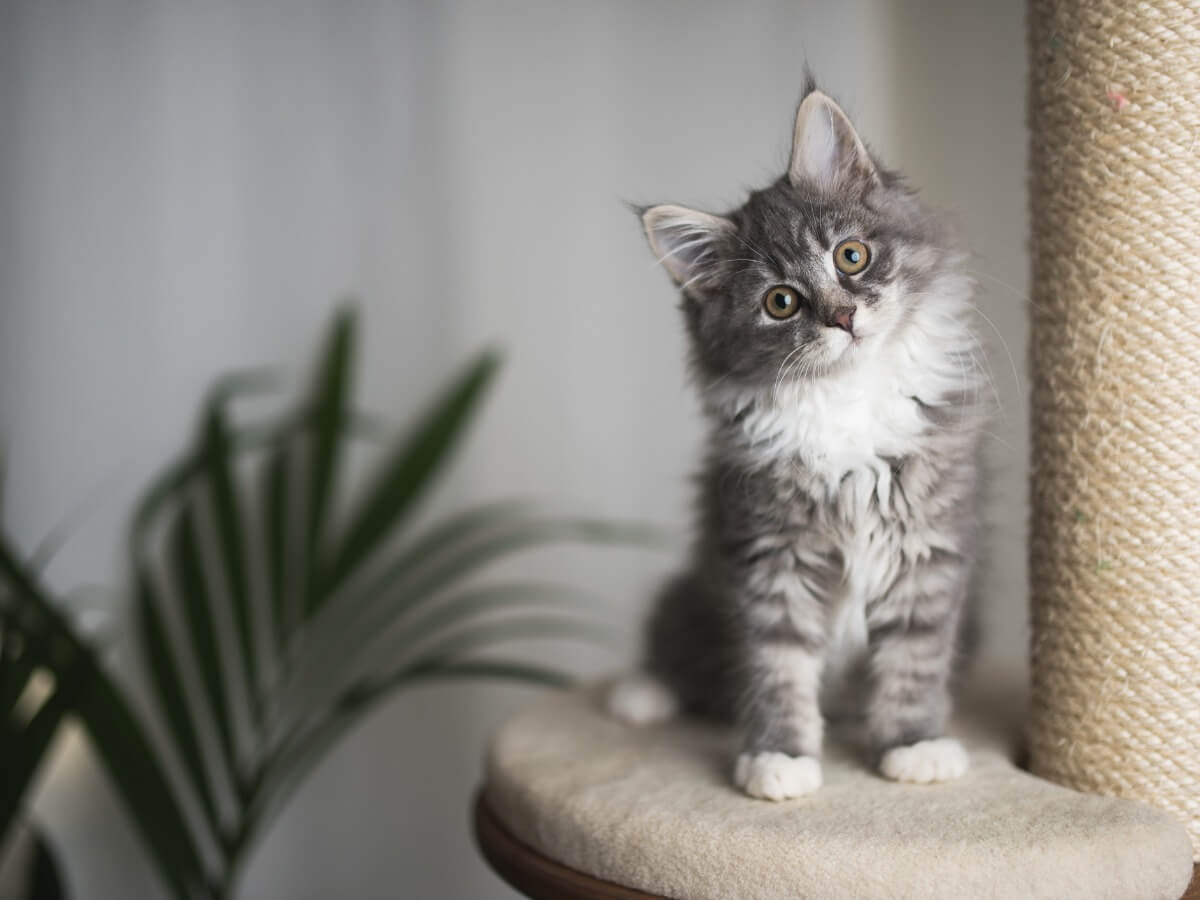How to Treat Rickets in Cats

Rickets in cats is a pathology that affects bone strength. This disease comes from a nutritional deficit, which ends up causing decalcification of the animal’s bones. If left untreated, rickets leads to softening of the bones and malformations.
Currently, this condition is no longer a very common disease, thanks to the care given to feed pets correctly. Even so, it’s still necessary to pay attention to possible warning signs that help us prevent and maintain the health of the pet. Learn more about rickets in cats and its characteristics in this article.
What is rickets in cats?
Rickets is a disease that softens and causes bone malformations. This arises as a consequence of a deficiency of vitamin D, phosphorus or even by inheritance. The lack of this micronutrient prevents the intestine from absorbing calcium from food, resulting in a lack of mineralization of the growing bone and cartilage.
Vitamin D is a prohormone that allows the use of calcium. If there isn’t enough of it, it interrupts the metabolism that allows the bone to calcify. This problem occurs more in small cats than in adults.
What are the causes of rickets in cats?
The main cause of rickets in cats is the lack of vitamin D in the animal’s body. This is caused by a chain of events, and the outcome is that the feline’s metabolism is unable to “harden” —calcify— the bones.
In the first place, this causes a poor use of calcium in the intestine. As the body detects a serious lack of calcium, the body is forced to remove it from its main source: the bones. In other words, the body needs calcium but can’t obtain it from food, and, therefore, the bone system is the only place that can meet the demand.
Although there are several causes, we can group them into three main ones:
- Nutritional deficiency: A lack of vitamin D in the feline’s diet.
- Heritable: Resistance to vitamin D or disruption of the cat’s metabolism.
- Derived from another disease: As a consequence of alternate pathologies that cause vitamin deficiency, such as parasitism, intestinal inflammation, etc.

Types of rickets
Rickets can be classified into three types:
- Deficiency rickets: This refers to a deficiency of Vitamin D, due to causes external to the body.
- Primary rickets: This includes congenital diseases, where there’s resistance to vitamin D metabolites.
- Secondary rickets: This is where rickets is a secondary effect of another disease, such as kidney failure, cancer problems, hereditary hypophosphatemic deficit, etc.
Symptoms of rickets in cats
Although not many people know it, we need to clarify that calcium isn’t only used for bones, but it’s also a common element within cells. In the cellular environment, this mineral is helpful for muscle contraction, coagulation, the functioning of the nervous system, the synthesis of enzymes, and many other things.
Due to this, the symptoms of rickets can be diverse. Even so, several of the following clinical signs can be found in felids:
- Deformed limb bones
- Physical weakness
- Enlargement or reduction in the size of the bones
- Affected walking (limping)
- Squatting – a deformation of the legs
- Incurvation of the diaphyses
Diagnosis of the disease
As for the diagnosis, a veterinary professional is the only one who can carry this out. Although the symptoms may be sparse, the physician is required to assess the severity of the disease. Therefore, a physical examination will be carried out to detect any malformations the cat has. In addition to this, they can carry out radiographic and blood tests, to review the state of the feline’s health.
Radiographic diagnosis
In this test, they will take x-rays of the bones. This is to detect any manifestation of the disease, through bone reduction, thickening or malformations, or the enlargement of the growth plate.
This study is best appreciated in the ulna and radius, at the level of the epiphyses.
Blood biochemistry
Regarding a blood test, the criteria for determining rickets are the following:
- Low calcemia
- High phosphorous levels and the calcium/phosphorus ratio well below 1.
- High alkaline phosphatase
- Detection of anemia – 80% of cases present it
- Low concentration of vitamin D or metabolites
Treatment of rickets in cats
Treatment is usually simple and effective and seeks to compensate for the lack of vitamin D in the system. In order to do this, nutritional supplements are used that improve the level of the vitamin, as well as calcium. In addition, the metabolism of this compound requires sunlight for its processing, so exposure to the sun is also necessary.
Your vet will likely recommend an additional deworming process. With this, they’ll seek to eliminate some other factor that’s causing the nutritional problem. Treatment of pain and bone malformations should also be considered, as they are problems derived from rickets.
Remember that any medication or treatment should only be provided by a professional. They are the only ones trained to give your pet the proper care.

You must pay attention to your pet’s diet at all times. Even though rickets is no longer a common disease, you don’t want to cause an unnecessary visit to the vet. Take care of them, take care of yourself, and prevent any illness in your home environment.
All cited sources were thoroughly reviewed by our team to ensure their quality, reliability, currency, and validity. The bibliography of this article was considered reliable and of academic or scientific accuracy.
- Godfrey, D. R., Anderson, R. M., Barber, P. J., & Hewison, M. (2005). Vitamin D‐dependent rickets type II in a cat. Journal of small animal practice, 46(9), 440-444.
- Geisen, V., Weber, K., & Hartmann, K. (2009). Vitamin D‐dependent hereditary rickets type I in a cat. Journal of veterinary internal medicine, 23(1), 196-199.
- Dittmer, K. E., & Thompson, K. G. (2011). Vitamin D metabolism and rickets in domestic animals: a review. Veterinary Pathology, 48(2), 389-407.
- Rueda Hernánz, J., & Fernández Santana, A. L. (1989). Osteodistrofias en el perro y en el gato: diagnóstico diferencial. Clínica veterinaria de pequeños animales, 9(1), 0001-14.
- Kautz, W., & Hoskins, J. (1975). Low Calcium Rickets in Young Cats. Iowa State University Veterinarian, 37(3), 3.
- Rueda Hernánz, J., & Fernández Santana, A. L. (1989). Osteodistrofias en el perro y en el gato: diagnóstico diferencial. Clínica veterinaria de pequeños animales, 9(1), 0001-14.
